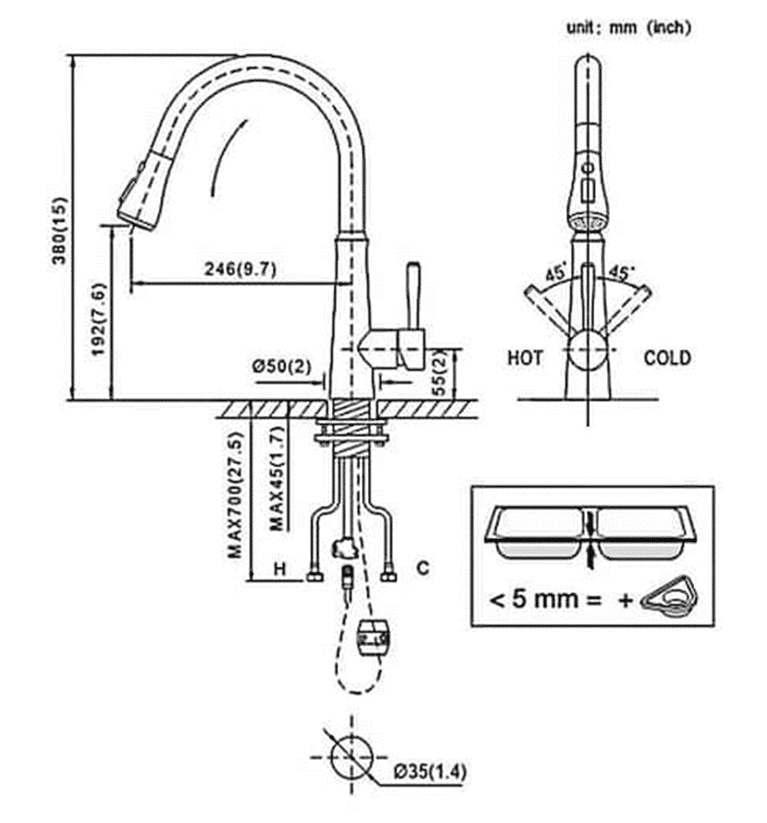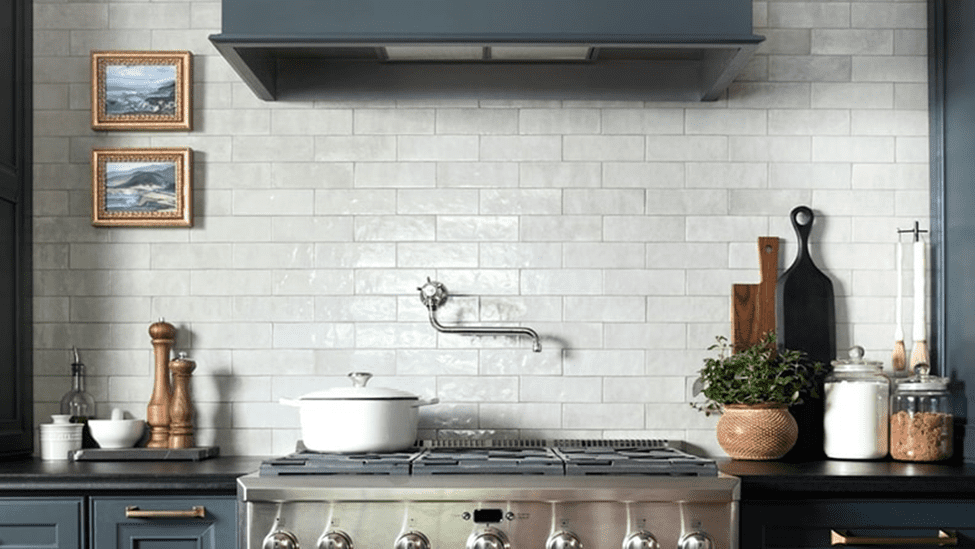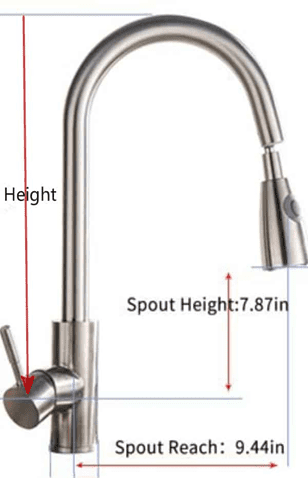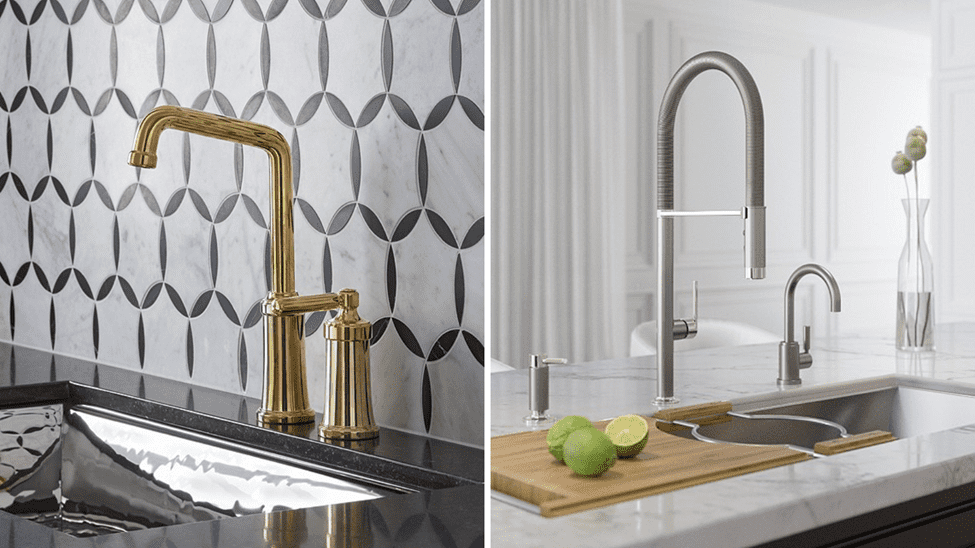The size of your faucet can make a difference in the efficiency of a kitchen sink. If you’re installing new faucets, there’s no reason not to choose an appropriate size based on your needs.
However, if you have existing ones in your kitchen, it may be time to check their condition and prepare for replacement. Research shows the median value of kitchen remodelling will cost you around $4000. It says 80% of owners spend at least on one new kitchen feature.
Replacing your kitchen faucet is a good idea, but it can be a frustrating decision since faucets display your personality and style. Therefore you have no choice but to get it right. You can pick from different finishes, designs, and even faucet material types based on your tastes.
JUMP TO : Kitchen Faucet Size | How to Measure the Kitchen Faucet Size | Standard Size of Kitchen Faucet |
- There is no standard kitchen faucet chart.
- It’s essential to consider the size of the faucet because it affects operations within the sink.
- The size of your kitchen sink influences the right size of faucet for your kitchen.
- The presence of shelves above your kitchen countertop, or their absence, also determines the best size of your faucet.
Kitchen Faucet Size – Why Does It Matter?
The size of your kitchen faucet is a big deal. Sure, it’s nice to have a large faucet that can accommodate multiple streams of water at once. But if you need more space in your kitchen, an oversized faucet could be a problem.
But why is that so?
A good faucet has a height that can comfortably accommodate the items you wash. If the spout is higher, it is easier to fit tall utensils under it for cleaning or filling.
On the contrary, a tall faucet won’t work if you have shelves or a wide window edge above your sink. However, they are ideal for use with a shallow sink.
Consequently, ensure your new faucet fits comfortably in your current decorating scheme and layout. Consider these factors:
- how many people are going to be using the sink daily
- the amount of water used
- whether they plan on washing dishes by hand or machine (if so, do not buy an oversized faucet).
Once you’ve decided what size of faucet will fit into your home best, ensure it stays clean! Make sure no water is left behind after use so that.
Is There a Kitchen Faucet Size Chart?
The size of your kitchen faucet is a matter of personal preference. No specific chart determines the right size for your space.
However, when choosing a faucet, you should consider the size of your sink and countertop. If the sink is too small or the countertop is too large, you might want a giant faucet, whereas if they’re just right, you’ll probably be happy with something smaller.
Also Read: Kitchen Faucet Vs. Bar Faucet
How Do You Measure the Size of a Kitchen Faucet?
Measuring the size of your faucet is a great way to ensure that it fits in with your other fixtures in the room. It’s also a good idea to measure the handle of your faucet before you buy it, so you know what size handle will work best.

Source: The Home Depot
It’s also important to measure the existing faucet first. Then measure the new faucet handles and spouts, and compare them to the old ones.
If something seems off, don’t worry—you can always return the new one for a different size if necessary. Here’s a detailed guide on how to carry out the measurements:
The Horizontal Distance
To measure the horizontal distance of a kitchen faucet, you’ll need a ruler and a pencil. But before you begin, make sure you turn off the faucet handles.
With the handles in the off position, measure from the tip of the left handle to the right handle’s outer end. If you choose to use a ruler, it should rest against the counter to remain level.
Measure the thickest point of the faucet spout for a kitchen faucet with a single handle.
For kitchen faucets sitting on a sink deck plate, measure the distance past the handles.
Related Read: How to Remove Green Buildup on Faucet?
The Distance From The Backsplash

Source: Lowes
Maybe you are wondering, what is a backsplash?
The wall behind the kitchen countertop or sink basin usually has certain materials added to it. In most cases, this area has tiles.
A backsplash provides an easy-to-clean surface when the cooking splashes fall on the wall. In addition, it adds color and style to the kitchen.
Important note: Backsplashes form 86 percent of the most renovated features in the kitchen.
Measuring the distance between the backsplash and the countertop is essential so your sink will be placed at a suitable height.
If you have a small kitchen, there will be no problem finding a space for your new sink in this case because there will be enough room for it. However, if your kitchen is crowded with furniture, you should reconsider your options.
If you have to measure the distance from the backsplash of a kitchen faucet, you’ll need to find a ruler or tape measure that’s long enough.
Once you have the required tools,
- Measure the distance from the back of the countertop to where water will hit when it’s turned on.
- Then measure this distance again and subtract the first measurement from it.
- This is how far away from the countertop you should be before turning on your sink.
The Faucet’s Height

Source: sunrise specialty
Measuring the height of the faucet in your kitchen ensures that the water pressure is appropriate for your needs. It also ensures you don’t have to reach above your head when washing dishes or using the sink.
To measure the height of your faucet, you will need a tape measure and a pen or pencil.
- First, place the tape measure around the faucet’s handle.
- Next, mark off how far down from that handle the tip of your pen is (usually, this will be easy because you can see right through it).
- Use that measurement as your starting point and add 2 inches to it.
- This will give you a total measurement across all four sides of where you want your faucet height to be (so if it is currently 24 inches tall, it should be about 34 inches tall).
Related Read: Brass Vs. Stainless Steel Kitchen Faucets
The Underside of the Faucet
The best way to measure the undersides of kitchen faucets is with a tape measure.
- Firstly, measure from the center of each side of the faucet to its edge.
- Then, take another measurement from that point on either side.
- This gives you two sizes for each side of your faucet.
Another simple way is to measure the underside of the kitchen faucet, turn off the water and open the faucet. Next, place a ruler on the faucet, with one edge resting on the spout. You can then use this to measure how far out from the wall your faucet is located.
The Circumference of the Spout
The spout is that part of a faucet that delivers the hot and cold water to the sink. Mostly, it’s the part that people notice first, either straight or gooseneck.
Why is measuring the circumference of a spout crucial?
The circumference of the spout determines how many inches of water to dispense at a time. It’s usually measured in mm, but you can also measure it in inches.
To measure the circumference of the spout, you’ll need a ruler and something to hold onto, like a measuring tape or string. Hold onto something steady when measuring to help keep your fingers from slipping when you’re taking measurements.
Hold the ruler vertically at eye level and extend it over your head to touch both sides of your face when looking up. This will help ensure that your measurements are accurate).
Before measuring, ensure there are no obstructions between where you’re standing and where you want to measure (for example, mirrors and furniture). If any objects are blocking this area, move them out before taking any measurements.
What Is The Standard Size Of A Kitchen Faucet?
The standard size of a kitchen faucet is 7 inches. This is the most common size faucet, but there are others. There are also 3/4-inch and 1-inch faucets available in some kitchens.
Customer reviews show that a 17.3-inch faucet with a 9.3 inches sprout reach would also be a decent choice for any kitchen.
Also, if you have a standard kitchen sink, you can opt for any eight-inch-tall faucet, especially if it’s a one-handle pull-down faucet sprayer or has a soap dispenser. However, 10 inches will be your real deal if you go for two-handled gooseneck sprayers.
But maybe you are looking for something unique!
The market is awash with plenty of other faucets that consumers can purchase. These include:
Wall-mount Faucets

Source: Grohe
As the name suggests, these mount to the wall behind the kitchen sinks. They look as if they are floating over the kitchen sink from a distance.
You make a sleek design out of these if you combine them with backsplashes.
What’s more?
You can get wall-mount faucets in touch-free styles that offer a stylish and clean design. With wall-mount faucets, cleaning the kitchen sink area becomes easier. Moreover, you will have more room for handwashing and other tasks.
Wall-mount faucets are easy to install and use on walls or cabinets without requiring much space. They can be used with any sink base or drain assembly with an opening at least 7 inches wide (and often more).
All you need is an experienced contractor who works with plumbing systems and fixtures (both residential and commercial). The cost will depend on what kind of installation you need.
![16 Types of Kitchen Faucets Explained [With Pros + Cons] 16 Types of Kitchen Faucets Explained [With Pros + Cons]](https://houseadorable.com/wp-content/uploads/2023/02/Roca_griferia_cocina_mencia_negro_DEF_900x505_acf_cropped-1@2x-250x250.jpg)
![Kitchen Faucet Vs. Bar Faucet [What is The Difference] Kitchen Faucet Vs. Bar Faucet [What is The Difference]](https://houseadorable.com/wp-content/uploads/2023/01/GettyImages-1177440335-0210e69740fd4045ab6a88f1588e9f4f.jpg)
![Centerset Vs. Widespread Faucets [8 Differences Explained] Centerset Vs. Widespread Faucets [8 Differences Explained]](https://houseadorable.com/wp-content/uploads/2023/03/1_332369605_6500081363358836_8480186754416832788_n-250x250.jpg)
![Chrome Vs. Stainless Steel Faucets: [An In-Depth Analysis] Chrome Vs. Stainless Steel Faucets: [An In-Depth Analysis]](https://houseadorable.com/wp-content/uploads/2023/03/51gDGcVWBL._AC_UF10001000_QL80_-250x250.jpg)
![Pros and Cons of Wall-Mounted Faucets : [Includes Buying Guide] Pros and Cons of Wall-Mounted Faucets : [Includes Buying Guide]](https://houseadorable.com/wp-content/uploads/2023/02/s-l1600-250x250.jpg)
![How Much Does It Cost to Build a Kitchen Island? [Custom Made+DIY] How Much Does It Cost to Build a Kitchen Island? [Custom Made+DIY]](https://houseadorable.com/wp-content/uploads/2022/03/cost-of-kitchen-island.jpg)
![Pull Down Vs. Pull Out Faucet [9 Major Differences Explained] Pull Down Vs. Pull Out Faucet [9 Major Differences Explained]](https://houseadorable.com/wp-content/uploads/2023/04/image4-3-250x250.jpg)
